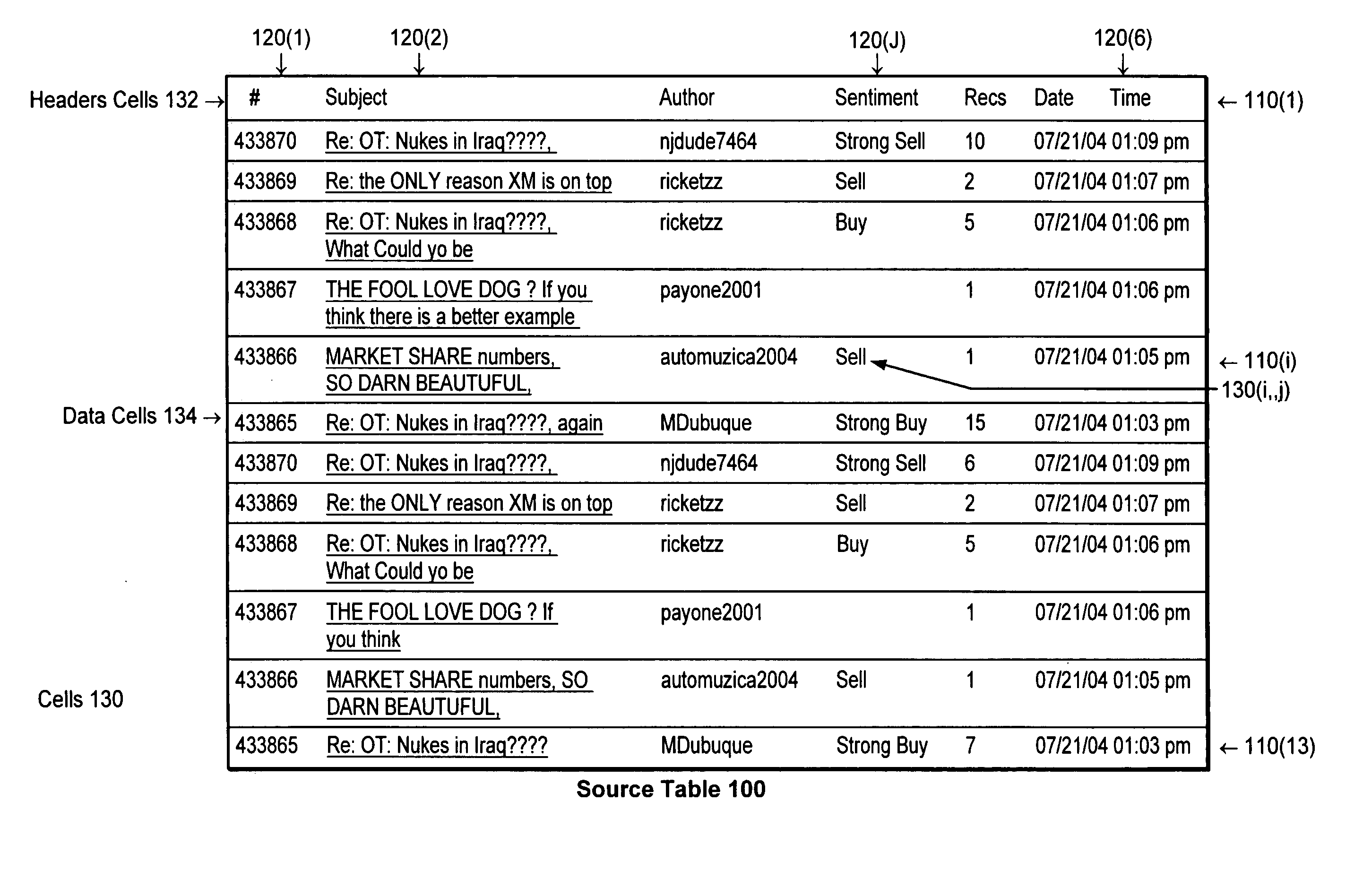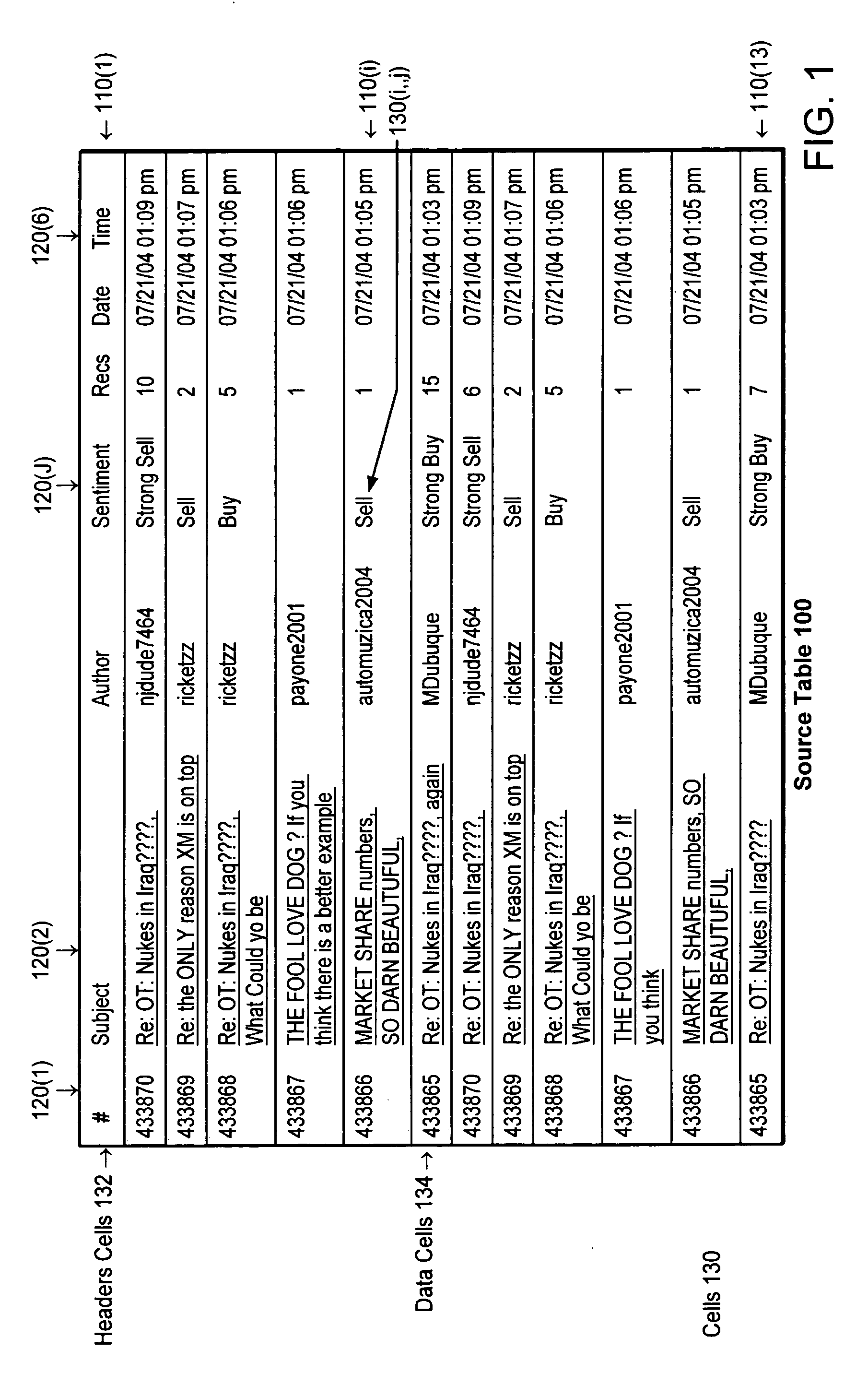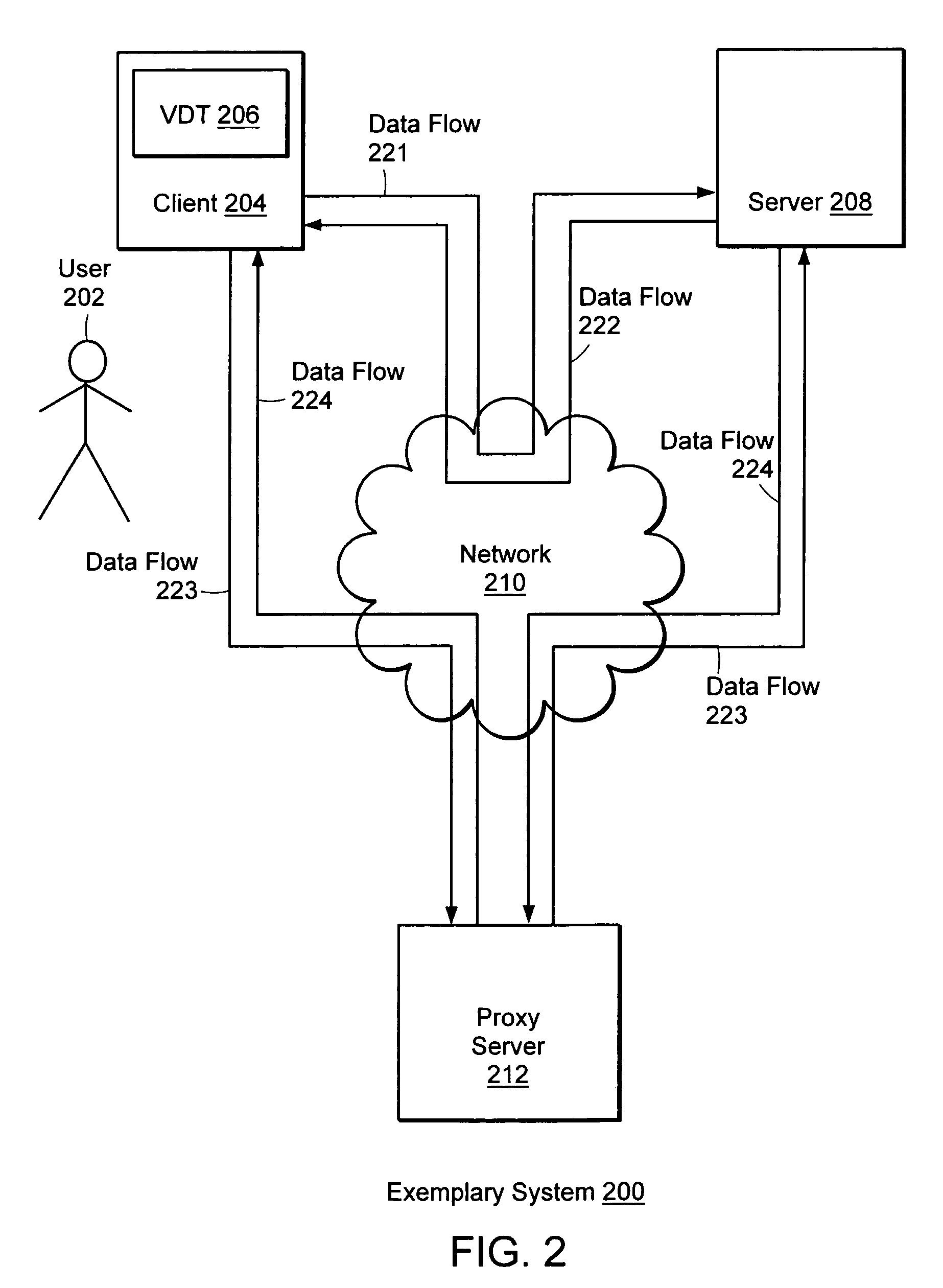Methods for altering the display of table data suitably for visualization within visible display widths
a table data and display width technology, applied in the field of methods, can solve the problem of not being able to place all of the data in a common row, and achieve the effect of lessening the loss of readability
- Summary
- Abstract
- Description
- Claims
- Application Information
AI Technical Summary
Benefits of technology
Problems solved by technology
Method used
Image
Examples
Embodiment Construction
[0032] Before we describe illustrative embodiments of the invention, we will introduce nomenclature that will be helpful in that description.
[0033] As used herein, the term source table refers to a collection of data that is stored as a relation that can be presented as a table. Each record in the relation is conventionally displayed as a row of the table. In the rows, contents of fields representing the same attribute are conventionally displayed as a column of the table. Source table also includes any set of computer instructions that specify display data in such rows and columns. The term source row refers to a record in the relation.
[0034] As used herein, the terms reformatted table layout and reformatted table refer to the results of formatting or reformatting a source table that has been formatted or reformatted in accordance with the methods described below. The terms reformatted table layout and reformatted table may also include a set of computer instructions that specify...
PUM
 Login to View More
Login to View More Abstract
Description
Claims
Application Information
 Login to View More
Login to View More - R&D
- Intellectual Property
- Life Sciences
- Materials
- Tech Scout
- Unparalleled Data Quality
- Higher Quality Content
- 60% Fewer Hallucinations
Browse by: Latest US Patents, China's latest patents, Technical Efficacy Thesaurus, Application Domain, Technology Topic, Popular Technical Reports.
© 2025 PatSnap. All rights reserved.Legal|Privacy policy|Modern Slavery Act Transparency Statement|Sitemap|About US| Contact US: help@patsnap.com



